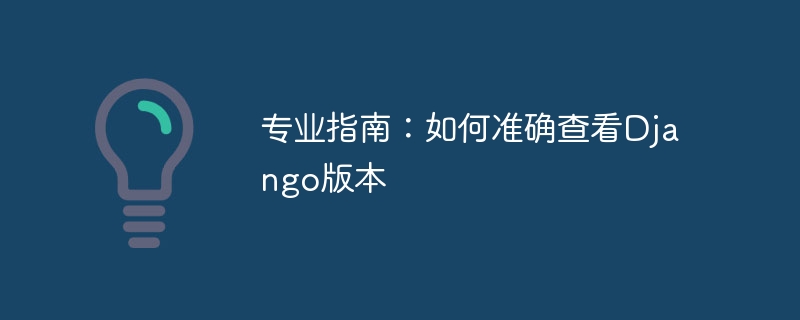

Professional Guide: How to accurately view Django version, specific code examples required
Introduction:
Django is a highly popular Python web framework that is constantly updated The version is very important for developers. Checking the Django version is crucial to ensure you are using the latest features and bug fixes. This article will explain how to accurately check the Django version and provide specific code examples.
1. Use the command line to check the Django version
Using the command line is the easiest and fastest way to check the Django version. First, make sure you have Django installed correctly. Next, open a terminal or command line window and enter the following command:
python -m django --version
After running the above command, you will be able to see the version number of Django in the terminal.
2. View the version in the settings.py file of the Django project
The settings.py file in the Django project contains various settings and configuration information for the project. By reading this file you can easily check Django's version.
Open the settings.py file of your Django project and find the following line:
import django print(django.get_version())
Add the above code to the end of the settings.py file. Save and run your Django project and you will be able to see Django's version number in the terminal or console.
3. Check the Django version in the Python script
If you are writing a Python script and need to check the Django version, you can use the following code:
import django print(django.get_version())
Add the above code to your Python script and run the script. You will see Django's version number in your terminal or console.
4. Check the installed Django version through pip
If you want to check the installed Django version and the version information of other installed Python packages, you can use the pip tool. Enter the following command in the command line:
pip show django
After running the above command, you will be able to see the installed Django version and other related information.
5. Use the requirements.txt file to view the Django version
The requirements.txt file is usually used to record the dependency packages and their versions required by the Python project. You can get Django's version information by viewing this file.
Open the requirements.txt file of your Django project and search for the "Django" keyword in it. You will be able to find the line related to Django which contains the version number of Django.
Conclusion:
The above are several ways to accurately check the Django version. During the development process, knowing and using the latest Django version is crucial to the successful implementation of the project. You can easily obtain and confirm the Django version information you are using through the command line, settings.py file, Python script, pip tool, and requirements.txt file.
Please note that in order to ensure the stability and security of the project, it is recommended to always use the latest version of Django and update your project in a timely manner.
Reference:
The above is the detailed content of The Complete Guide: Making sure you view Django versions accurately. For more information, please follow other related articles on the PHP Chinese website!




